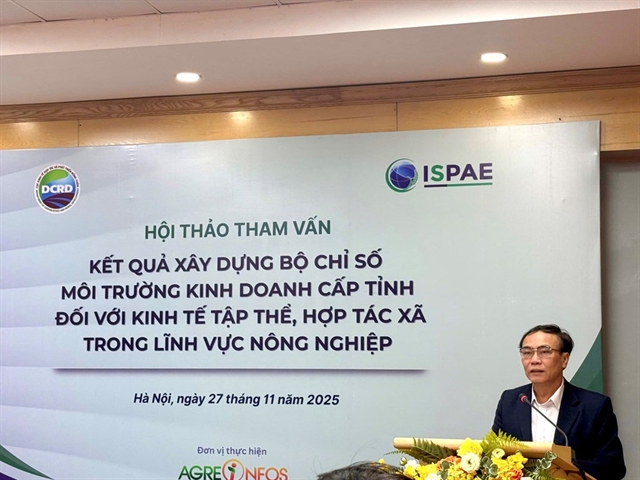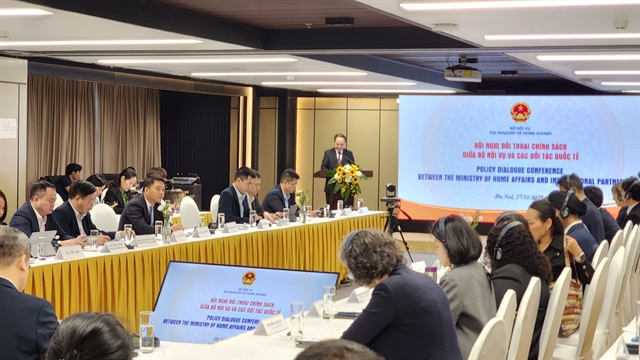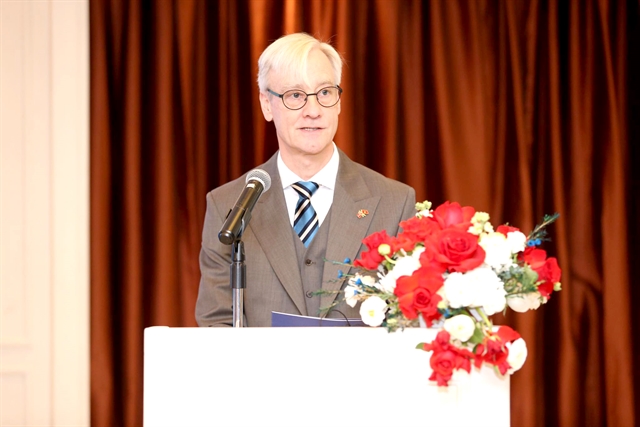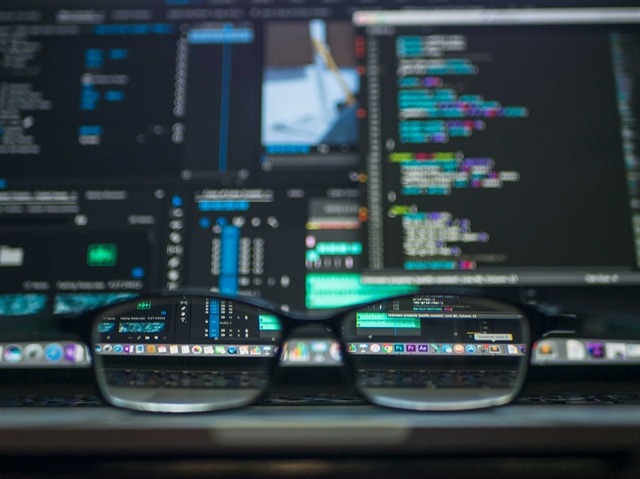 Economy
Economy

 |
| State Secretary of the Norwegian Ministry of Foreign Affairs Erling Rimestad. — Photo courtesy of the Norwegian Embassy |
State Secretary of Norwegian Ministry of Foreign Affairs, Erling Rimestad talked with Việt Nam News reporter Nguyễn Hằng about cooperation in aquaculture and seafood industry in the future on the occasion of his official visit to Việt Nam.
Is there potential for cooperation between Việt Nam and Norway in aquaculture and the seafood industry in the future?
I am very optimistic. The Letter of Intent of Cooperation signed between the Ministry of Agriculture and Rural Development of Việt Nam and the Ministry of Trade, Industry and Fisheries of Norway last year gives us a good framework to further enhance bilateral co-operation in the aquaculture industry.
Norway’s expertise, advanced products and technologies can assist Việt Nam in developing aquaculture in a sustainable and green manner and improving processing quality to produce higher volumes of products and adding more value to serve both domestic and international markets.
Việt Nam’s success stories with shrimps and pangasius can be improved even further through increased investments in technology and research and development for more added value and to create high-quality products that can satisfy the most demanding markets, including Norway. A potentially interesting area for further collaboration is in improving the processing of marine rest raw materials to produce high value products of both feed and human grade and for exports.
In terms of bilateral trade, Norway has salmon, cod, king crab and, shrimp from the sea while Việt Nam has pangasius and brackish water shrimps. We do not compete but we will complement each other. I do hope that the Free Trade Agreement between Việt Nam and the European Free Trade Association (EFTA) state members of Iceland, Norway, Liechtenstein, and Switzerland will be concluded soon so that we can have a new instrument to boost bilateral trades between our countries.
I am pleased to say that fisheries, aquaculture, and the marine sector have been a central part of our cooperation in the 52 years since we established diplomatic relations.
For nearly forty years, Norway has enjoyed cooperation with Việt Nam and Vietnamese agriculture ministry in the fisheries sector. Việt Nam’s first fisheries law was developed with Norwegian support, including technical assistance and training of human resources. Many official sand experts of the agriculture ministry and its departments have studied in Norway. It is encouraging to see our cooperation reaching a new level as equal partners, as a result of Việt Nam becoming a middle-income country.
Developing fisheries and aquaculture in a sustainable and just manner amid rising global challenges including climate change, is a shared interest for Norway and Việt Nam. Innovation and technology will play a key part for it to succeed. This opens new opportunities to further extend our traditional cooperation.
Norwegian salmon is already well known in Việt Nam. But Norway has more to offer. We are planning to introduce a broader range of seafood from Norway to Vietnamese consumers this year. Việt Nam is also a venue for outsourced processing of Norwegian seafood products such as mackerel for other markets in the region. This is an area with potential for further growth. This is thanks to the country’s impressive growth rate, political stability and abundant young labour force.
How does Norway produce high quality seafood and salmon products and create such a reputable branding?
Combining traditions with knowledge and a modern scientific approach, always keeping the environmental context in mind, forms the basis of Norwegian aquaculture.
The Norwegian coastline, which reaches far into the Arctic, offers ideal conditions for a fish that thrives in cold waters. Here, the salmon can live in its natural environment. For thousands of years, Norwegian fishermen have survived thanks to our in-depth knowledge about the Norwegian sea, and the, sometimes, inhospitable coastal environment. Therefore, we know what our fish need and where they thrive.
Norway was the first country to successfully farm and commercialise Atlantic salmon back in the 1970s. Every Norwegian fish farm is sustainable and offers plenty of room for the fish to move around. Only 2.5 per cent of the volume in the fish farms is fish, the remaining 97.5 per cent is water. We also only feed the salmon clean, high-quality food in the form of pellets. In addition, the Norwegian salmon production has reduced its use of antibiotics remarkably. Since 1987 it has been reduced by a startling 99 per cent. Today only 0.14 grams of antibiotics is going into every tonne of salmon.
Today, Norwegian salmon farmers continue to push boundaries to evolve and improve when it comes to technology and sustainability. Our salmon has both low carbon-footprints and environmental footprints. Norwegian salmon is very resource-efficient, meaning less water and feed is needed to produce edible meat than for most other proteins. The effect of fish farming on the environment is also constantly monitored: the seabed beneath all fish farms in Norway are subject to environmental inspections by independent third parties, to ensure low emissions from droppings of feed and faeces beneath the fish farms and to allow for a recovery period for the natural seabed.
All of these steps contribute to the special qualities of the Norwegian salmon with its typical flavour, colour and consistency. We build our marketing and branding campaign on these unique characteristics, and this is what has made Norwegian salmon familiar to consumers worldwide as healthy, tasty, and easy to prepare and of a high enough quality that it can also be eaten raw.
What are the opportunities for Việt Nam to export its seafood to Norway?
Each Norwegian consumes about 19.5kg of fish and fish products per year. I am very impressed that Vietnamese people eat almost twice as much seafood, at about 37kg per person per year. That should mean that there is a lot more room for seafood in the Norwegian diet as well!
I see a promising opportunity for Vietnamese seafood, particularly shrimp and pangasius, in Norway. Generally, Norwegian consumers are very focused on healthy and high-quality food. People want products that are clearly marked with their origin and that carry a certification that the products have been checked for any harmful substances and found to be safe.
Norway is not a member of the European Union but is part of the EU’s single market through the European Economic Area agreement. Most of our food standards and regulations therefore correspond with those in the EU.
As Việt Nam has signed numerous free trade agreements, Vietnamese seafood exporters would be familiar with the standards and technical regulations of many importing markets includes the EU. In Norway, we focus on how animals are cultured, fed, caught, processed and even transported. We also have in place traceability systems for seafood products, which are very beneficial to our seafood industry, in order to gain the trust of consumers and profit from markets worldwide. — VNS




